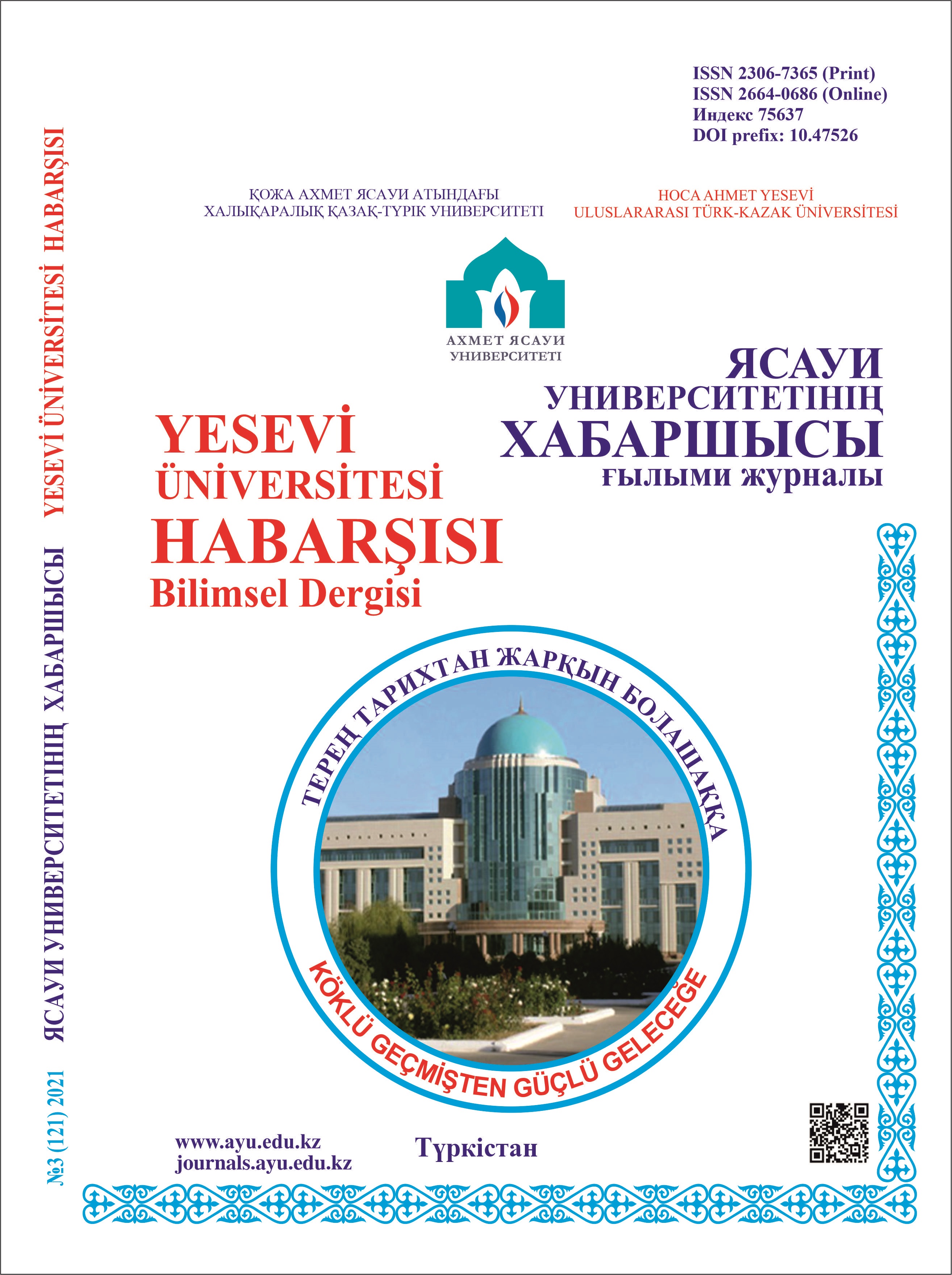Methodological Features of Teaching the Course “STEAM in Alternative Energy Projects: Solar Energy” in English
161 129
Keywords:
STEAM/STEM education, English language education, solar energy, alternative energy, exclusion, methodological, research activities.Abstract
The effectiveness of the teaching and learning process, as well as the content of education, significantly improves the quality of learning models. Content that can be used to develop students' competencies contributes to effective and interesting learning, and one of the analogs of this approach is the use of STEAM. In addition, the integration of the course “STEAM in Alternative Energy Projects: Solar Energy” with STEAM-based education and English language learning will help to increase the interest of students. The purpose of the study is to develop creative thinking and deepen students’ research knowledge by studying the key topics of the basic physics course, with a focus on solar cells, in English. The study analyzes scientific papers to identify the features of teaching English using STEAM. Mathematical and statistical analyses were carried out using the survey method. The hypotheses were tested using G*Power software. As a result, the methodological features of teaching the course “STEAM in Alternative Energy Projects: Solar Energy” in English were revealed. It is shown that students can achieve significant success by mastering this course. The influence of STEAM on understanding the characteristics of solar cells, as well as on the formation of literacy and the development of engineering and research activities has been determined. The article demonstrates the effectiveness of teaching English in the educational system and the effectiveness of STEAM-based learning.
References
REFERENCES
Arpaci I., Dogru M.S., Kanj H., Ali N., Bahari M. An Experimental Study on the Implementation of a STEAM-Based Learning Module in Science Education // Sustainability. – 2023. – №15(8). https://doi.org/10.3390/su15086807
Fitriyah A., Ramadani S., Dwijayanti. Pengaruh Pembelajaran STEAM Berbasis PjBL (Project-Based Learning) terhadap Keterampilan Berpikir Kreatif dan Berpikir Kritis // Inspiratif Pendidikan. – 2021. – №10(1). – P. 209–226.
Hasibuan R., Fitri R., Dewi U. STEAM-Based Learning Media: Assisting in Developing Children’s Skills // Jurnal Obsesi : Jurnal Pendidikan Anak Usia Dini. – 2022. – №6(6). – P. 6863–6876. https://doi.org/10.31004/obsesi.v6i6.3560
Wahyuningsih S., Nurjanah N.E., Rasmani U.E.E., Hafidah R., Pudyaningtyas A.R., Syamsuddin M.M. STEAM Learning in Early Childhood Education: A Literature Review // International Journal of Pedagogy and Teacher Education. – 2020. – №4(1). – P. 33–44. https://doi.org/10.20961/ijpte.v4i1.39855
Özbay A.S., Kayaoglu M.N. The Use of REACT Strategy for the Incorporation of the Context of Physics into the Teaching English to the Physics English Prep Students // Journal of History Culture and Art Research. – 2015. – №4(3). – P. 91–117. https://doi.org/10.7596/taksad.v4i3.482
Choruh A., Ramankulov Sh. Stem Education in Physics: Development of a Laboratory Stand Focused on the Implementation of Mini-Projects // Iasaui universitetіnіn habarshysy. – 2023. – №4 (130). – B. 198–208. https://doi.org/10.47526/2023-4/2664-0686.17
Ramankulov S.Z., Dosymov E., Mintassova A.S., Pattayev A.M. Assessment of student creativity in teaching physics in a foreign language // European Journal of Contemporary Education. – 2019. – №8(3). – P. 587–599. https://doi.org/10.13187/ejced.2019.3.587
Parida B., Iniyan S., Goic R. A review of solar photovoltaic technologies. Renewable and Sustainable Energy Reviews. – 2011. – №15(3). – P. 1625–1636. https://doi.org/10.1016/j.rser.2010.11.032
Ranabhat K., Patrikeev L., Revina A.A., Andrianov K., Lapshinsky V., Sofronova E. An introduction to solar cell technology // Journal of Applied Engineering Science. – 2016. – №14(4). – P. 481–491. https://doi.org/10.5937/jaes14-10879
Rahayu A.P., Sundarti S. Analysis of knowledge of physics education students about solar cell utilization technology // EduFisika. – 2021. – №6(1). – P. 28–33. https://doi.org/10.22437/edufisika.v6i1.11830
Pinthong J., Kaewmanee W. Virtual reality of solar farm for the solar energy system training // In 2020 5th International STEM Education Conference, iSTEM-Ed. Institute of Electrical and Electronics Engineers Inc., 2020. – P. 2–4. https://doi.org/10.1109/iSTEM-Ed50324.2020.9332669
Capilla R.P., Carmen Cruz Gallo M., Marín Rodrigo P.P., Villar P.D., García B.A. Pvlearning: herramienta web para la enseñanza de la energía solar fotovoltaica // Pixel-Bit. Revista de Medios y Educación. – 2012. – №41. – P. 109–116.
Wang Q., Yu Y. Evaluation of solar energy potential based on artificial intelligence and optimization of college English courses in coastal areas // Arabian Journal of Geosciences. Springer Science and Business Media Deutschland GmbH. – 2021. – №14. https://doi.org/10.1007/s12517-021-07339-1
Llorente J.B. Cooking with the sun: Teaching and capaciting about solar energy // Renewable Energy and Power Quality Journal. – 2017. – №1(15). – P. 808–812. https://doi.org/10.24084/repqj15.472

